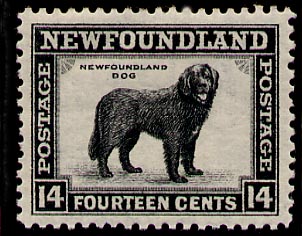
History

 |
Newfoundland History |
 |
Newfoundland History
Second Talks of Union of Newfoundland With Canada (1895)
[This text was written in 1950. For the full citation see the end of the document. Links have been added to the original document by Claude Bélanger.Further information on the union talks of Newfoundland with Canada may be gathered at this page.]
The suggestion that negotiations for confederation be reopened was welcomed by the Canadian Government. The two delegations met at Ottawa for discussion from Apr. 4 to Apr. 16, 1895. The main obstacle proved to be financial terms, particularly the method of computing the public debt, which amounted to $15,800,000, including expenditure on the railway and the cost of its operation over a period of years. Newfoundland proposed that Canada should take over the railway, and that the amount spent by Newfoundland on the completed section should be deemed an asset and deducted from the total debt. Canada, however, did not wish to take over the railway and was unwilling to deduct the Newfoundland investment in it from the total debt. Although both sides made concessions on other points, a gap of just under $200,000 per annum still remained between Newfoundland's estimate of its fiscal need and what the Canadian Government felt it could pay. The financial terms offered by Canada were substantially better than those enjoyed by the existing provinces and the Canadian Government felt unable to go further lest other provinces might have an excuse for complaining of inequality and demanding improvements in their terms. After an unsuccessful plea to the British Government to take over part of the debt, the talks were abandoned.
The situation in Newfoundland was saved by the action of Mr. (later Sir) Robert Bond, the Colonial Secretary, who pledged his personal credit to the extent of $100,000 which, in addition to Government securities, made it possible to obtain a temporary loan in Montreal. Finally a long-term loan was raised in London and the Island was saved from financial ruin.
Despite the failure of these negotiations, Newfoundland was steadily being drawn closer to Canada over the quarter century before the First World War. The completion of the railway in 1896, and the establishment of a regular steamship service between Port aux Basques and Sydney , linked Newfoundland with the railway system of the continent. The Wabana Mines at Bell Island began operations in 1895 to supply the iron ore for the growing steel industry at Sydney . After the failure of the commercial banks in Newfoundland in 1894, Canadian banks established branches there and the Canadian dollar became the accepted currency.
By 1914 Newfoundland's economy, though still highly dependent on fishing, was much more diversified than it had been twenty years before. The opening of a large pulp and paper industry at Grand Falls in 1909 and the expansion of iron mining at Bell Island had provided new employment and new products for export. Exports during the twenty years following 1894 had risen from about $5,800,000 to almost $15,000,000. In 1894 about 90 p.c. of Newfoundland 's exports consisted of fish and fish products; in 1914, though the value of fish exports had doubled, they made up less than 74 p.c. of the total. Exports of iron ore had risen in the same period from about $500,000 to more than $1,500,000. Exports of forest products, in 1894 less than $85,000, had increased by 1914 to about $2,300,000.
Source: GOVERNMENT OF CANADA , Newfoundland. An Introduction to Canada's New Province, Published by authority of the Right Honourable C. D. HOWE, Minister of Trade and Commerce, prepared by the Department of External Affairs, in collaboration with the Dominion Bureau of Statistics, Ottawa, 1950, 142p., pp. 15-41.
© 2004 Claude Bélanger, Marianopolis College |